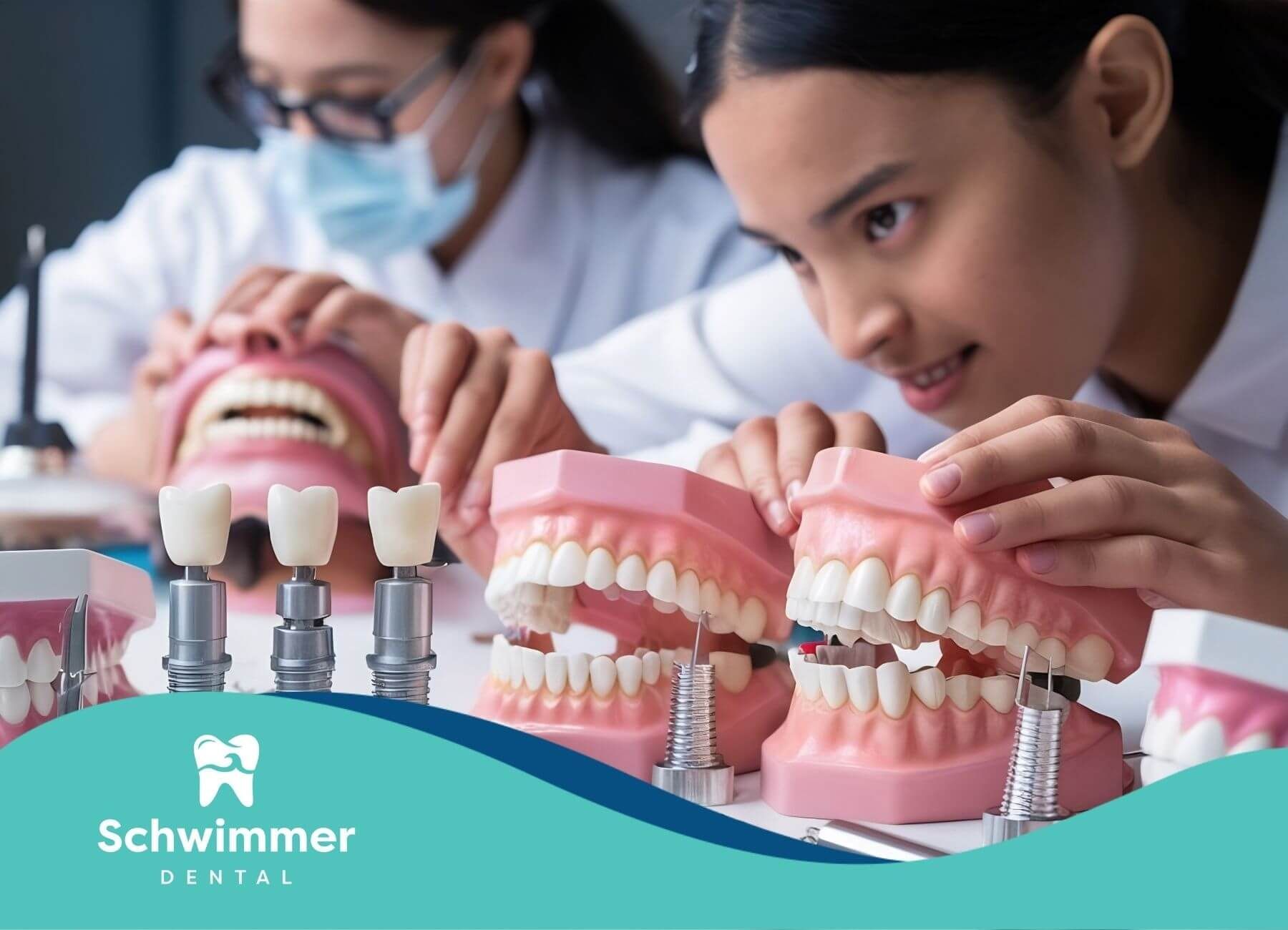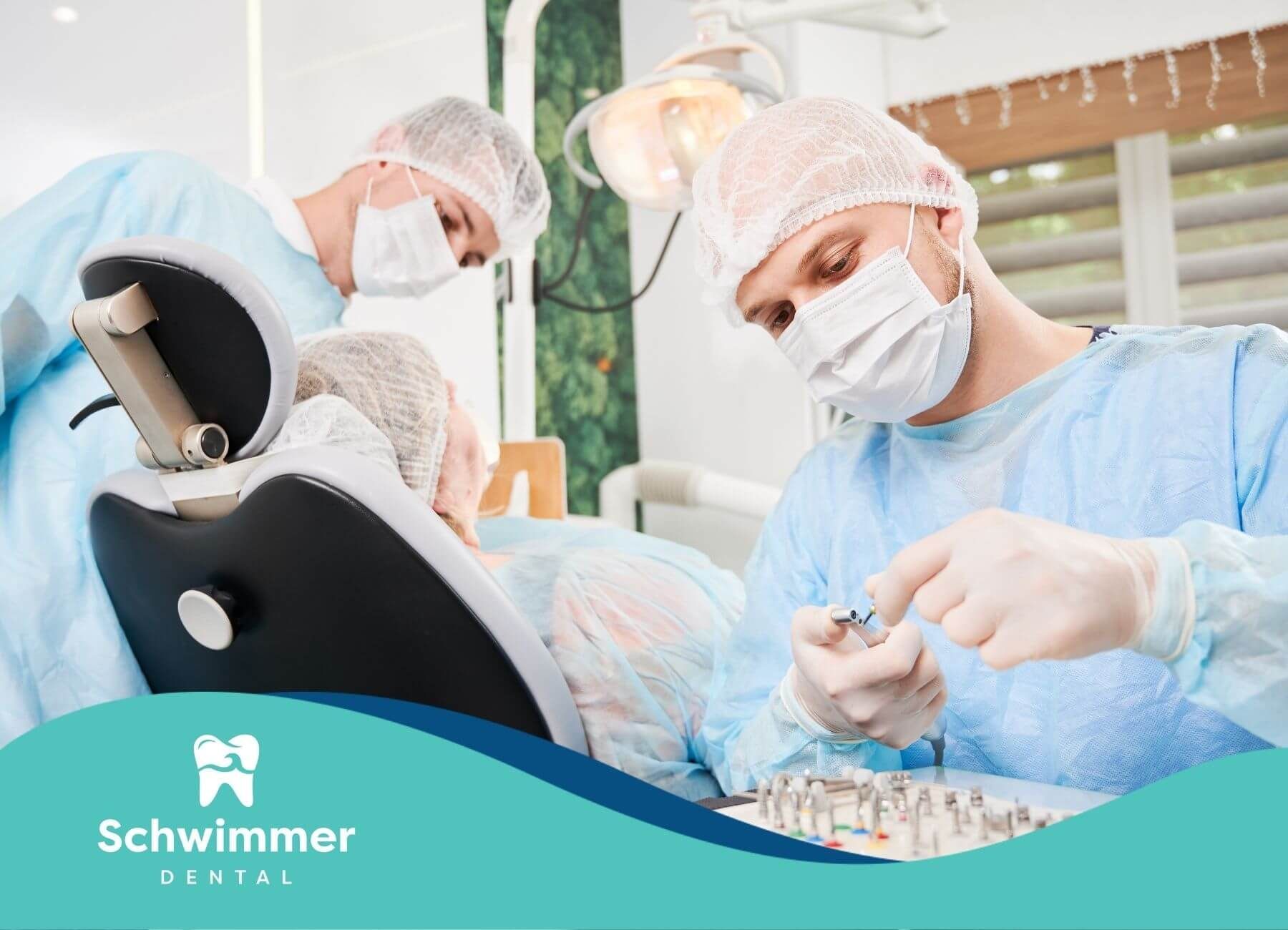Transform Your Smile: Crossbite Correction in Adults Made Easy
Understanding Crossbites
Crossbites are malocclusions where the upper teeth fall inside the lower teeth when biting down. Understanding the root causes of crossbites is essential for both prevention and effective treatment.
Genetic Influence on Crossbites
Genetics can significantly impact the development of crossbites. Certain genes influence the size, shape, and growth patterns of jawbones and teeth, which can lead to anterior crossbite or other types of dental misalignment. Uneven jaw growth due to hereditary factors often results in imbalanced jaws, causing malocclusion. Genetic predispositions can make certain individuals more susceptible to developing crossbites, highlighting the importance of understanding family dental history.
Developmental Factors in Crossbites
Developmental factors play a crucial role in the formation of crossbites. Childhood habits like thumb sucking and pacifier use can exert pressure on the developing jaw and teeth, leading to misalignment. Additionally, issues such as prolonged use of bottles or inadequate dental care can contribute to the imbalanced development of the jaw.
Another important aspect of developmental influence is jaw growth and alignment. Imbalanced jaw development, whether due to genetic or environmental factors, can result in conditions such as unilateral posterior crossbite, which has a worldwide prevalence of 8%, and even higher (11%) in a European population.
It is vital for parents and dental professionals to recognize and address these developmental factors early on. Early intervention can help in redirecting the growth patterns and alignments of the jaw and teeth, potentially preventing crossbites from becoming more severe and difficult to treat in adulthood. For more information, you may visit our page on crossbite in children.
Complications of Untreated Crossbites
Understanding the complications of untreated crossbites is crucial for everyone affected, from parents of affected children to dental professionals. Crossbites, if left untreated, can result in complications beyond cosmetic concerns, impacting both dental health and jaw functionality.
Dental Issues from Crossbites
Untreated crossbites can lead to a variety of dental issues. The misalignment can cause uneven wear on the teeth, leading to excessive stress on specific teeth. This can result in toothaches, cavities, and even tooth loss over time. Additionally, crossbites can increase the risk of tooth decay and gum disease, as the abnormal positioning of teeth can make them harder to clean effectively, trapping food particles and plaque.
| Dental Issue | Description |
|---|---|
| Tooth Decay | Increased likelihood of cavities and eventual tooth loss |
| Gum Disease | Higher risk due to difficulty in maintaining proper oral hygiene |
| Excessive Wear | Abnormal wear and tear on certain teeth, leading to tooth decay |
For further details on the differences between crossbites and other dental issues like overbites, visit our page on crossbite vs overbite.
Impact on Jaw Health
Crossbites don't just affect the teeth; they can also have significant implications for jaw health. One primary concern is the development of temporomandibular joint (TMJ) disorders. The misalignment can cause chronic pain, headaches, and jaw pain, particularly when chewing or opening the mouth.
| Jaw Health Issue | Description |
|---|---|
| TMJ Disorders | Chronic pain in the jaw joint, headaches, difficulty chewing |
| Bone Loss | Potential loss of bone in the jaw due to uneven pressure |
| Speech and Chewing Issues | Difficulty in speaking and chewing effectively due to misalignment |
Crossbites can also cause bone loss in the jaw, which can weaken the structural integrity of the teeth and lead to more significant dental problems.
Treatment for crossbites should be timely to prevent these complications. Although it is ideal to treat crossbites during childhood, treatment options like braces and aligners can also be effective in adulthood. For more information on treatment approaches for different age groups, check out our section on crossbite treatment options.
Understanding the severity and potential complications of untreated crossbites emphasizes the importance of addressing this dental issue promptly for better long-term oral health.
Treatment Options for Children
Addressing crossbites early in life can prevent a host of dental and jaw complications. There are various effective treatment options for children, ensuring that their dental development progresses smoothly.
Orthodontic Treatments for Children
Orthodontic treatment is the most common method for correcting crossbites in children. The effectiveness of particular appliances varies based on the child's age and the severity of the crossbite.
Quad-Helix
- Age Range: 7 to 11 years
- Quad-helix devices are fixed appliances that utilize four helical springs to apply gentle pressure to the molars, gradually widening the upper jaw.
- According to NIH Research, quad-helix treatments are more effective than simple observation, helping to increase the final inter-molar distances significantly.
Expansion Plates
- Age Range: 7 to 11 years
- Expansion plates are removable devices that expand the arch gradually, fitting snugly in the mouth.
- While patient compliance is essential, fixed tooth-borne expansion with quad-helix devices has shown to be more effective than removable tooth-borne expansion, with shorter treatment durations and increased final inter-molar distances.
Below is a comparison of the effectiveness of common orthodontic treatments:
| Treatment Type | Age Range | Effectiveness | Duration |
|---|---|---|---|
| Quad-Helix | 7 - 11 years | High | Shorter |
| Expansion Plates | 7 - 11 years | Moderate | Varied |
Surgical Intervention for Severe Cases
Surgical intervention becomes necessary for severe crossbites where orthodontic treatments alone are inadequate. These procedures are often used when jaw growth is significantly affected.
- Le Fort I Osteotomy:
This procedure involves repositioning the upper jaw to correct misalignment, commonly used when structural changes are required.
- Mandibular Osteotomy:
This surgery corrects the lower jaw by cutting the bone and realigning it to improve the bite's function and appearance.
- Surgically Assisted Rapid Palatal Expansion (SARPE): SARPE is used when traditional expansion methods fail, incorporating surgical techniques to assist in widening the upper jaw.
Surgical options should be considered a last resort when other treatments have failed. By addressing crossbites early with appropriate treatments, ranging from orthodontic appliances to surgical interventions, the long-term dental health of children can be significantly improved, reducing future complications.
Treatment Approaches for Adolescents
Effectively treating crossbites in adolescents requires a tailored approach. Orthodontic interventions are crucial during this developmental stage to guide proper jaw growth and alignment. Here, we explore the effectiveness of Hyrax treatment and other appliances for adolescents.
Hyrax Treatment for Adolescents
The Hyrax appliance is prominently used for addressing posterior crossbites in adolescents, particularly those aged 12 to 16. This treatment is known for its ability to increase inter-molar distances, providing significant correction compared to observation alone.
Advantages of Hyrax Treatment:
- Effective in expanding the upper jaw.
- Non-invasive compared to surgical options.
- Customizable to individual patients.
The effectiveness of the Hyrax appliance is illustrated below:
| Treatment | Age Group (years) | Effectiveness (increase in inter-molar distance) |
|---|---|---|
| Observation | 12 - 16 | Minimal |
| Hyrax Appliance | 12 - 16 | Significant |
These figures highlight the significant improvement in bite correction when using the Hyrax appliance, making it a preferred choice for many orthodontists.
Effectiveness of Different Appliances
In addition to the Hyrax appliance, other orthodontic devices are used to correct crossbites in adolescents. Understanding the effectiveness of these appliances can help in making informed treatment decisions.
Quad-Helix
The quad-helix appliance offers fixed tooth-borne expansion. It is particularly effective for correcting posterior crossbites and is more successful than removable expansion plates.
| Appliance Type | Effectiveness (increase in inter-molar distance) | Treatment Duration |
|---|---|---|
| Fixed (Quad-Helix) | Higher | Shorter |
| Removable (Expansion Plates) | Lower | Longer |
The table underscores the higher efficacy and shorter treatment duration associated with fixed appliances.
Expansion Plates
While less effective than fixed appliances like the quad-helix, removable expansion plates still offer benefits for certain patients:
- Suitable for patients with less severe crossbites.
- Offers flexibility in treatment.
- Generally less intrusive.
The choice of appliance will depend on the specific needs and preferences of the patient and the severity of the crossbite.
In summary, choosing the right appliance—be it the Hyrax, quad-helix, or expansion plates—involves considering the effectiveness, treatment duration, and specific needs. Each option offers unique advantages, ensuring that adolescents receive optimal care tailored to their dental health requirements. For further reading on related topics and understanding the various types of crossbites, visit our page on types of crossbite.
Correcting Crossbites in Adults
Addressing crossbites in adults can greatly enhance dental health and overall quality of life. Both braces and Invisalign offer effective solutions for crossbite correction in adults.
Braces for Adult Crossbite Correction
Braces are a widely trusted method for treating crossbites in adults. Orthodontists often recommend braces as a primary option due to their efficacy in repositioning teeth. Braces work by applying continuous pressure over time, slowly moving teeth into the desired position.
In many cases, braces are used in combination with other orthodontic appliances like expanders. The expander device is typically worn for about six months to gradually widen the jaw, making it easier to then align the teeth with braces. The braces themselves may need to be worn for roughly a year, though the exact duration can vary based on individual circumstances and the severity of the crossbite.
| Treatment Component | Typical Duration |
|---|---|
| Expander | 6 months |
| Braces | 12+ months |
For comprehensive guidance on the different types of crossbite and how braces can address them, consult your orthodontist.
Invisalign as an Alternative
Invisalign presents a less conspicuous alternative for correcting crossbites in adults. These clear aligners are custom-fitted to each patient's dental structure and are ideal for those seeking a more discreet treatment option.
Invisalign consists of a series of clear, removable trays that need to be changed every few weeks as the teeth gradually shift into the correct position. This method is especially effective for minor cases of crossbite and typically takes about a year to complete.
| Treatment Component | Typical Duration |
|---|---|
| Clear Aligners | ~12 months |
Both treatment methods have their own sets of advantages. Braces are suitable for more severe cases, while Invisalign offers a subtler approach, ideal for less complex corrections. To determine the best option for your specific needs, consult with your orthodontist.
Addressing Crossbite Symptoms
Crossbites can result in a variety of symptoms that affect daily life. These range from difficulties with speech and eating to significant pain and jaw issues.
Speech and Chewing Challenges
Crossbites often result in speech impediments due to the misalignment of teeth. This misalignment can create difficulty in pronouncing certain words correctly. Additionally, individuals with anterior crossbites, where the upper front teeth bite over the bottom teeth, may experience challenges in eating and present with tooth wear and gum disease.
The symptoms can be summarized as follows:
| Symptom | Description |
|---|---|
| Speech Impediments | Difficulty in pronouncing words correctly due to misaligned teeth |
| Difficulty Chewing | Problems eating efficiently, especially with anterior crossbites |
| Tooth Wear | Uneven wearing of teeth caused by improper alignment |
| Gum Disease | Increased risk of gum problems as a result of poor bite alignment |
Pain and TMJ Issues
Pain is a common symptom associated with untreated crossbites. It can manifest as headaches, toothaches, jaw pain, and pain while eating or chewing. A significant complication is the development of TMJ (temporomandibular joint) disorder, which occurs due to the strain placed on the muscles and ligaments around the joint.
The effects of pain and TMJ issues can include:
| Symptom | Description |
|---|---|
| Headaches | Frequent, possibly severe headaches linked to jaw strain |
| Toothaches | Pain in teeth due to excessive stress on particular teeth |
| Jaw Pain | Discomfort in the jaw caused by misalignment |
| TMJ Disorder | TMJ issues from muscle and ligament strain |
| Eating Pain | Discomfort while eating due to improper bite alignment |
| Difficulty Sleeping | Sleep disturbances as a result of jaw and tooth pain |
Addressing these symptoms effectively often requires targeted treatment options. Pain isn't just focused on the mouth; it can radiate to other areas, significantly impacting quality of life. If you're dealing with pain related to a crossbite or TMJ disorder, examine the potential benefits of crossbite correction in adults through various orthodontic treatments.
SOURCES:
https://pmc.ncbi.nlm.nih.gov/articles/PMC11134208/
https://pmc.ncbi.nlm.nih.gov/articles/PMC8709729/
https://www.webmd.com/oral-health/what-to-know-about-crossbite
https://en.wikipedia.org/wiki/Crossbite
https://www.healthline.com/health/crossbite
https://www.colgate.com/en-us/oral-health/adult-orthodontics/crossbite-correction-how-to-straighten-your-smile



